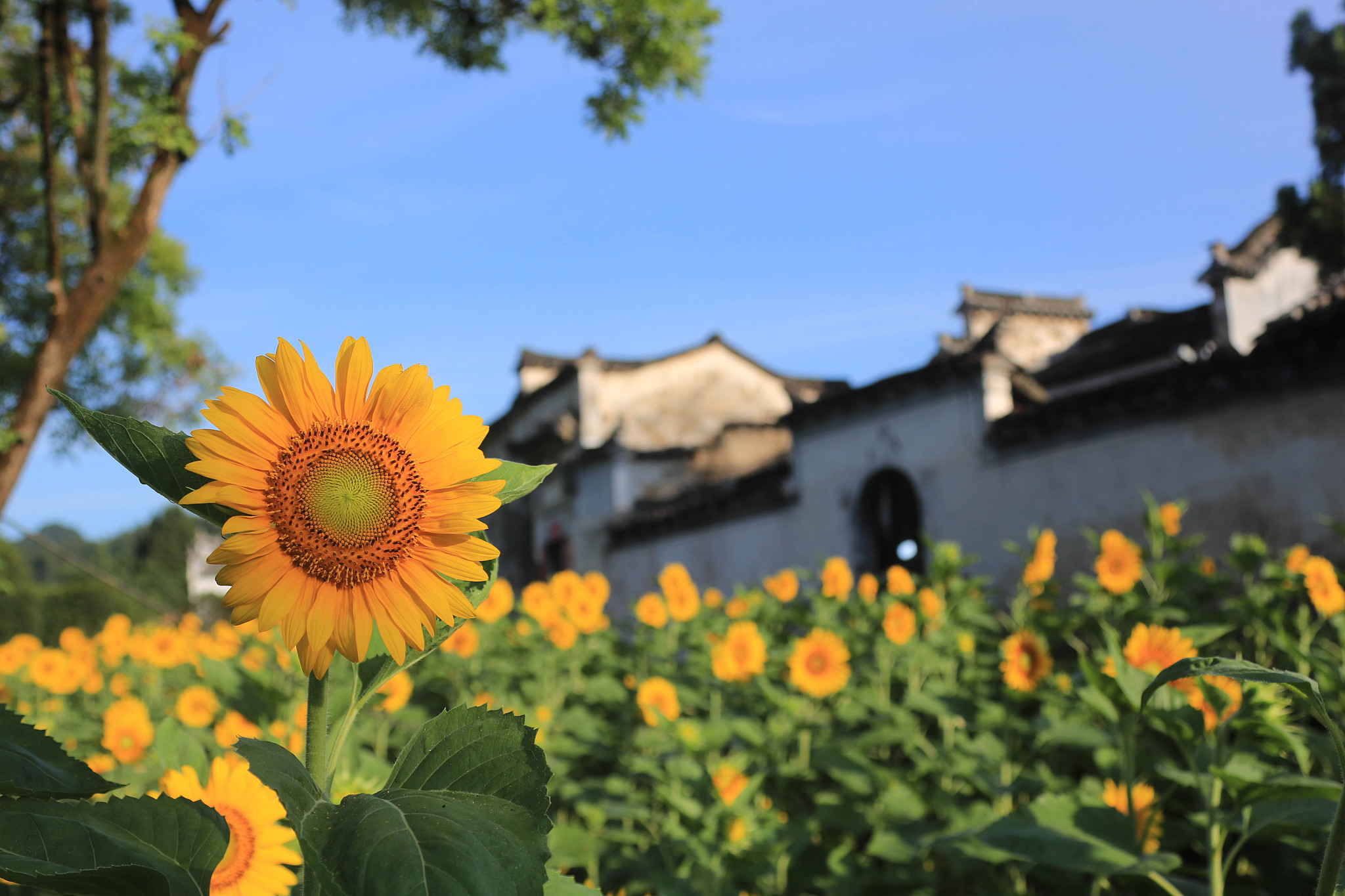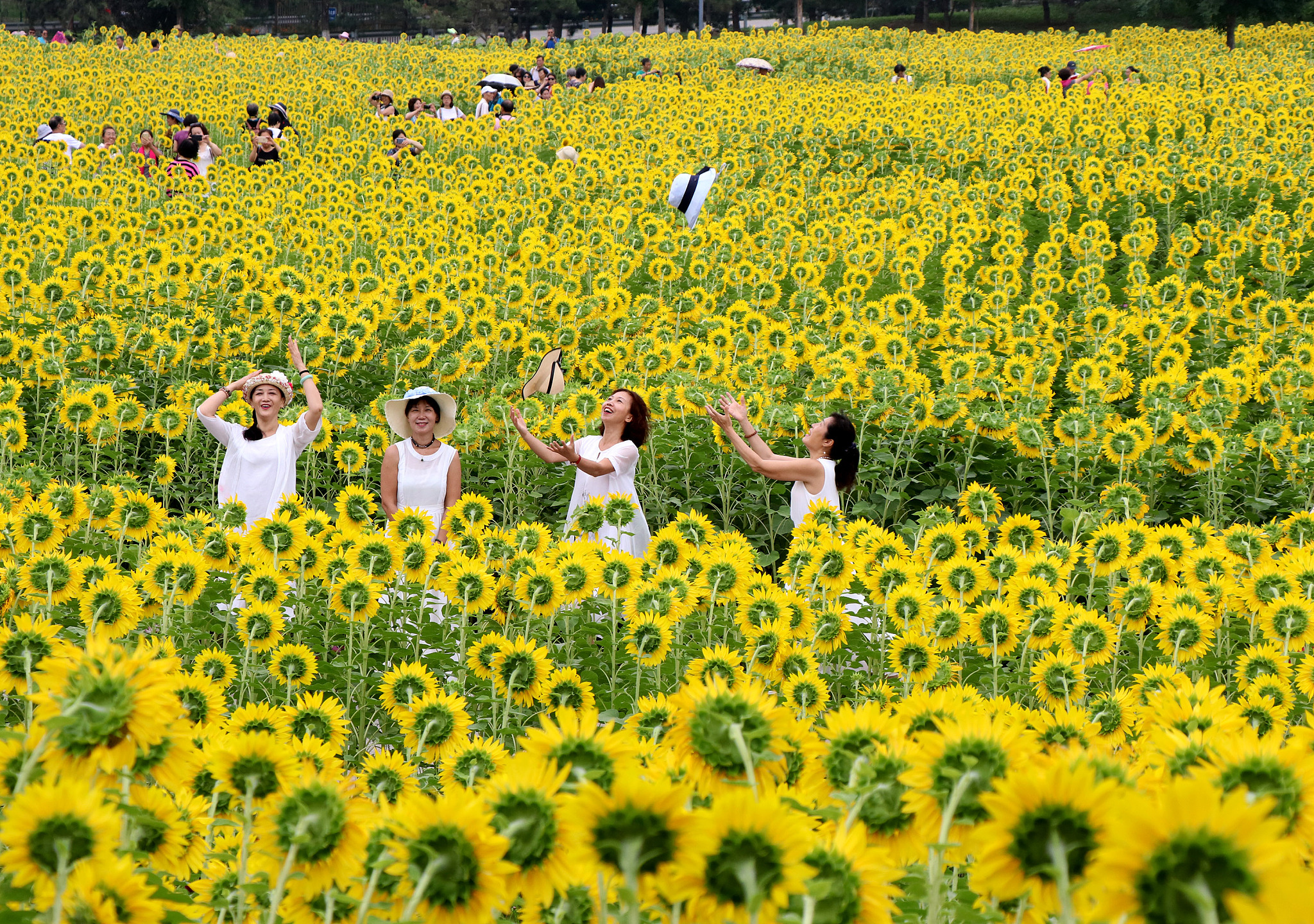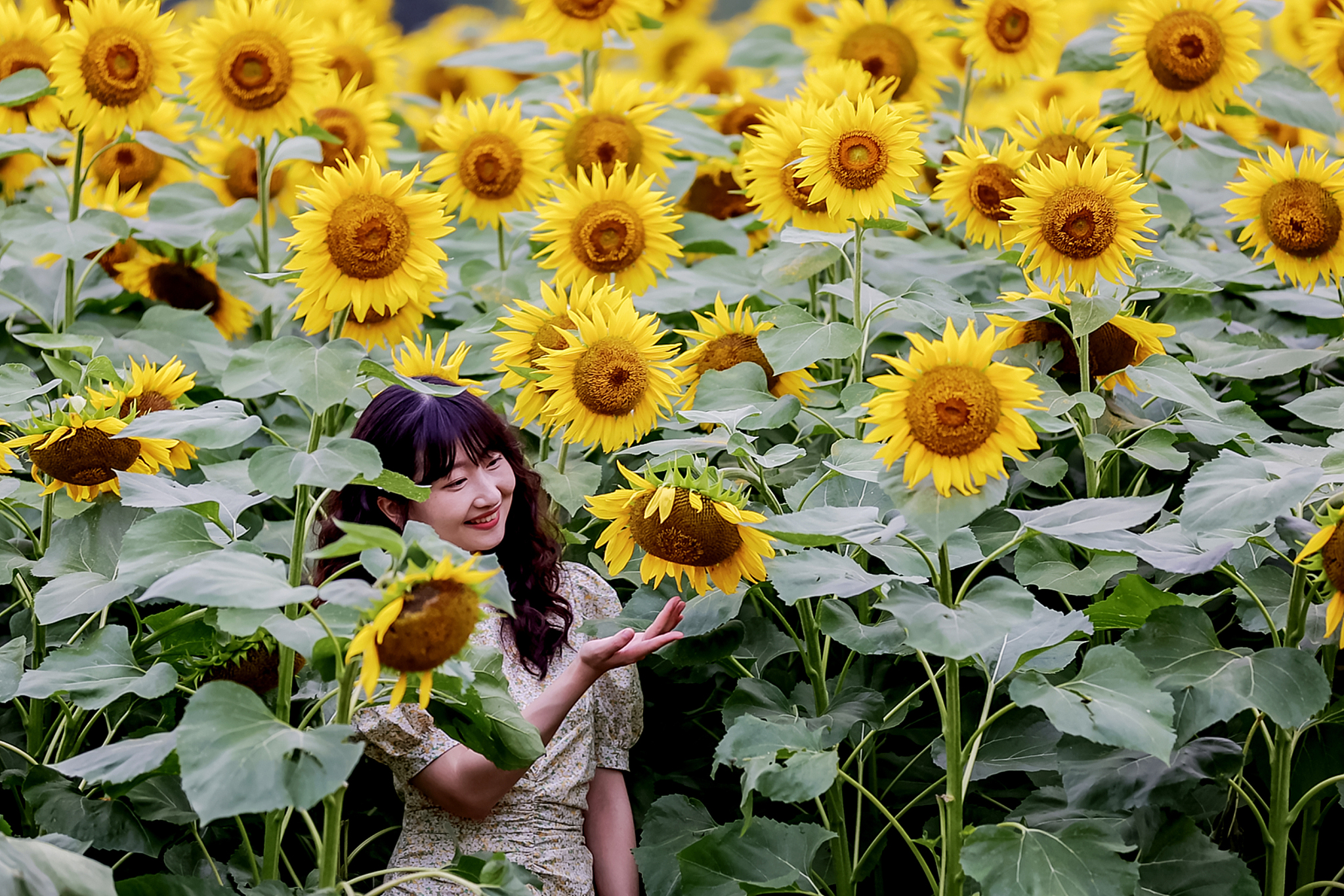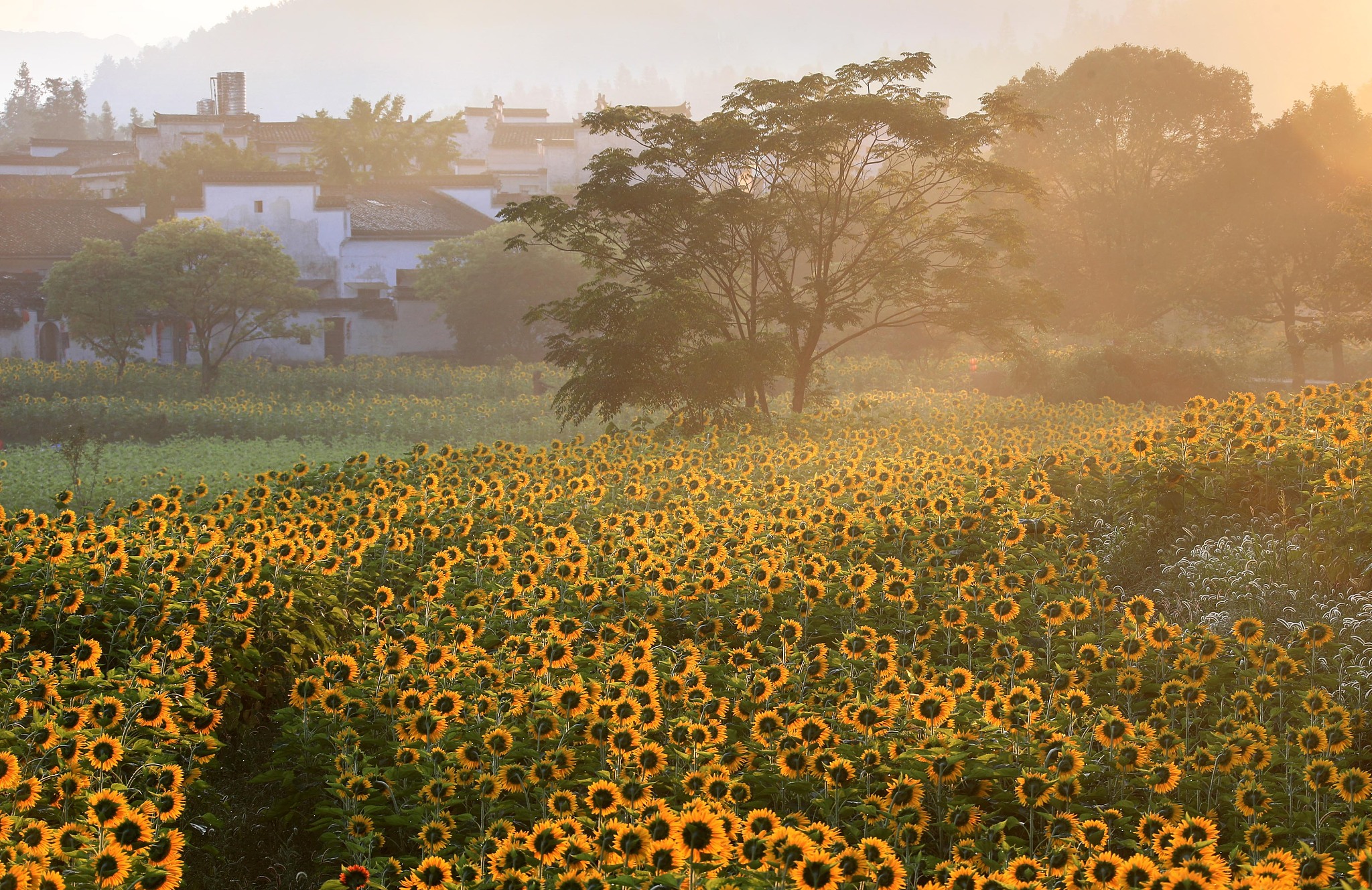You are a sunflower,
With golden pistils and stamens,
For whom you emit fragrance,
For whom you bend not.
The beautiful song sung by the late pop queen Teresa Teng depicts people's affection for the sunflower.
Native to South America, sunflower was introduced to China in the Ming Dynasty (1368-1644), originally for ornamental use. With tall figure, big flower and bright yellow color, the flower always give people a strong impression on its beauty.
It is recorded that in the middle of the Qing Dynasty (1644-1912), sunflower had been widely planted in eastern and northwestern China. But it was no longer just for appreciation then, but for more of its functions.

A view of sunflower field in the ancient Xidi Village, a UNESCO World Heritage site, in Huangshan of east China's Anhui Province, July 31, 2019. /CFP
A view of sunflower field in the ancient Xidi Village, a UNESCO World Heritage site, in Huangshan of east China's Anhui Province, July 31, 2019. /CFP
At the time, Chinese people believe more children bring more blessings. Since sunflower has many seeds, people liked to plant a few sunflowers in the courtyard in front of or in the backyard of their house, in a good wish that the flower could bring more children to the family.
The sunflower has also been treated as oil crop and planted in larger areas since then. Used for daily cook, sunflower seed oil can supplement the essential vitamins and beta carotenes of human body.
And since the early 20th century, the fried sunflower seeds have even been replaced pumpkin seeds and watermelon seeds to become one of the most popular snacks nationwide.

People revel in the beauty of a sunflower field in the Beijing Olympic Forest Park, China, July 2, 2018. /CFP
People revel in the beauty of a sunflower field in the Beijing Olympic Forest Park, China, July 2, 2018. /CFP
As its name suggests, sunflower has a trait of moving to point toward the sun and tracking the sun as it moves across the sky. People use sunflowers to symbolize the yearning for the light and the positive changes.
Easily adapting to different climates, the sunflower has become one of the key plants for tourism landscape across China in recent years. Although different varieties of sunflower bloom in different seasons, summer is usually a peak season. Here are some popular destinations for people to appreciate the lovely sunflowers.

A woman poses with sunflowers in the Beijing Olympic Forest Park, China, July 10, 2021 /CFP
A woman poses with sunflowers in the Beijing Olympic Forest Park, China, July 10, 2021 /CFP
High-valued sunflower field
The Beijing Olympic Forest Park boasts the largest and most diverse sunflower field in the northern downtown area of the city. The 6.7 hectares of sunflower field is located at a high-valued land – adjacent to the National Stadium where the opening and closing ceremonies of 2008 Olympic Games were held. In July, sunflowers in more than 20 varieties are in full bloom, attracting a large crowd of people to take photos. The season is expected to end on July 25 this year.

A view of sunflower field in Bayannur City, North China's Inner Mongolia Autonomous Region, March 15, 2017. /CFP
A view of sunflower field in Bayannur City, North China's Inner Mongolia Autonomous Region, March 15, 2017. /CFP
Much-produced sunflower field
North China's Inner Mongolia Autonomous Region produced more than 40 percent of the country's total sunflower seeds. As a flagship production region, Bayannur City takes sunflower the main economic plant and has a sunflower planting area of more than 400,000 hectares. The sunflower field there seems to disappear over the horizon, and you can experience what the sunflower sea is like.

A view of sunflower field in ancient Xidi village, a UNESCO World Heritage Site, in Huangshan City of east China's Anhui Province, July 31, 2019. /CFP
A view of sunflower field in ancient Xidi village, a UNESCO World Heritage Site, in Huangshan City of east China's Anhui Province, July 31, 2019. /CFP
Sunflower field in the World Heritage Site
The ancient Xidi village, a UNESCO World Heritage site, in Huangshan City of east China's Anhui Province is best known for its local Hui-style architecture and culture. But if you visit the village in late July and early August, the blooming sunflower will make you more appreciate its natural beauty. Golden sunflowers, white houses with dark green tiles, and white mist and cloud in the middle of green mountains — all make a favorite subject for photographers.
(Cover image: A view of sunflower field in Bayannur City, North China's Inner Mongolia Autonomous Region, March 15, 2017. /CFP)
Image designer: Li Xiaojie

